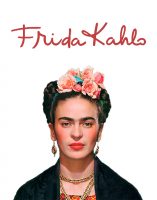An artist who was once caged by her own loneliness, and later liberated by her art, Frida Kahlo now stands as an icon in contemporary feminist culture.
Even women who have never passed by galleries showcasing her work and lingered before them know who she is and how she looks – her unmistakable appearance is a hallmark to breaking gender roles.
She once wrote in her diary “of my face, I like my eyebrows and eyes” and in her portraits, she was not afraid to dress the way she pleased, even if it was more masculine when compared to the dresses her mother and sisters wore.
“I’ll paint myself, because I am so often alone, because I am the subject I know best,” she said.
Kahlo is mostly celebrated for her small yet intense self-portraits that are said to unsettle the audience – her fixed gaze and stern appearance were uncharacteristic of female subjects at the time.
She even refers to her portraits as “the frankest expressions” of herself.
“Frida Kahlo is the reason I don’t necessarily feel lonely when I’m alone. Her self-portraits are a reminder that one’s own company can lead to a greatness that is not quite possible to come across in the presence of others,” said Anan Raafat, a visual arts senior.
While Kahlo’s paintings are now used to beautify calendars, gift cards and posters, her own personal story made its way to Hollywood in late October 2002, with Salma Hayek starring as Kahlo and Alfred Molina as her husband, Diego Rivera.
The movie is based on Hayden Herrera’s 1983 biography, Frida. Herrera was drawn to Kahlo because of “that thing in her work that commands you – that urgency, that need to communicate,” he told The Smithsonian.
Given the intricacies of her life story and her stance in modern feminism, AUC’s Heya:The Feminist Initiative screened the movie Frida on February 13 in the Conference and Visitor Center.
This memorable artist is also known to have deviated from the traditional depiction of female beauty by choosing to paint honest portraits of women going through real experiences that were often overlooked.
“They thought I was a surrealist, but I wasn’t. I never painted dreams. I painted my own reality,” wrote Kahlo.
While she was a figure of charm and talent because of her iconic works, what Kahlo showed best through her paintings was her pain.
She endured both physical and emotional pain and was unapologetic whilst depicting her suffering in her art.
Kahlo suffered chronic pain and about 30 operations and later had her leg amputated after a horrific traffic accident she experienced when she was a teenager. According to her description of the accident in her diary, “the handrail pierced me as the sword pierces the bull.”
Her emotional pain mainly stemmed from her turbulent relationship with her husband who was never faithful to her.
Frida’s own sexuality is ambiguous, having engaged in numerous relationships with men and women alike.
Born as Magdalena Carmen Frida Kahlo y Calderón on 6 July, 1907, her home, the Casa Azul, or the Blue House, which is now the museum of Frida Kahlo, was built by her father in a suburban Mexican city.
She deeply loved her father as she inscribed in one of her portraits of him that he is “character generous, intelligent and fine.”
In her paintings, Kahlo unknowingly set an example of how people should look and think about everyday female struggles. Her work has a deeper political message that reminds mankind of how female experiences have always been marginalized in this world, and that is a legacy that is bound to live on.
